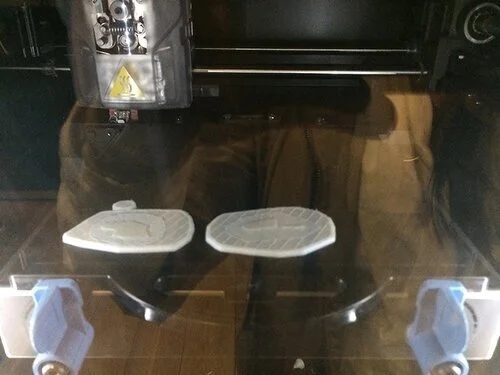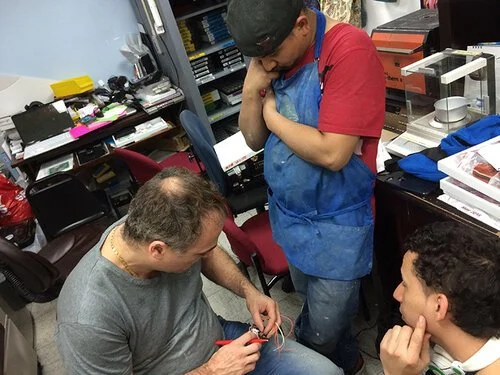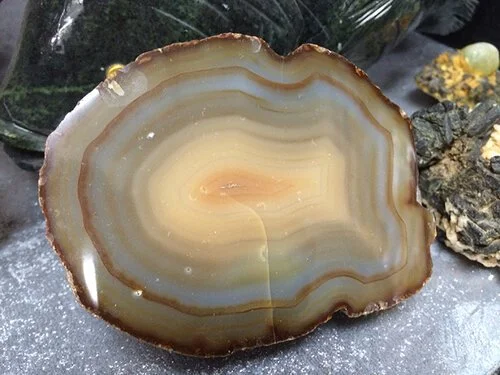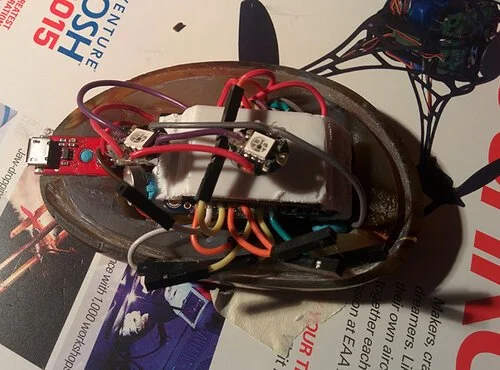Evoke Augmented Meditation Stone
A Day in a Life with Evoke.
Evoke: Reclaiming Attention in a World of Distraction
This thesis project began as an open-ended exploration into the concept of consumption—both in its material form, such as the purchasing of goods, and its non-material form, including the endless stream of content we absorb online. As our world becomes increasingly digital, I found myself questioning how these habits shape our quality of life.
Through personal experience, conversations, and research, one insight became clear: our attention is one of the most valuable and vulnerable resources we possess. Constant stimulation from our environment fragments our awareness, leaving us disconnected and depleted. Yet, attention—when consciously cultivated—can be a powerful tool for presence, clarity, and inner well-being.
In my personal practice, I discovered that cultivating awareness doesn’t require sitting cross-legged for hours. Inspired by ancient wisdom, behavioral science, and emerging technologies, I envisioned Evoke as a response to the hyper-visual, hyper-connected age of social media.
My research journey included observing societal patterns, engaging with mindfulness communities, and reviewing literature on stress, anxiety, and therapeutic interventions. For example, psychologists often give children worry stones to help them self-soothe—an idea rooted in both modern psychology and ancient ritual. I even visited the Natural History Museum to study artifacts that hold both functional and sacred significance.
In today's screen-saturated world, our visual sense dominates, leaving other senses—touch, sound, taste, smell—underdeveloped. This imbalance affects our ability to stay grounded. When we are overly focused outwardly, we lose our internal anchor. We become more susceptible to anxiety, distraction, and disconnection.
While many of my peers chose mobile apps as their final medium, I questioned: What if the end goal wasn’t just interaction, but inner attention? Could a product support presence rather than stimulate distraction? Could it create a calming ripple effect that improves how we engage with ourselves and others—our partners, colleagues, and communities? With an intention of how might we intentionally design an intervention that can reclaim genuine human connection.
Evoke emerged from this inquiry—a tangible, tactile object that acts as a counterbalance to screen-based overstimulation. It is designed to rhythmically engage the body, leveraging haptic technology as a form of subtle biofeedback. For example, haptics can interact with the vagus nerve, a critical part of the parasympathetic nervous system responsible for regulating digestion, blood pressure, emotional equilibrium, and more.
After months of ideation, prototyping, and iteration—working within tight deadlines and using off-the-shelf sensors—I faced numerous challenges: coding complexity, material conductivity, and the invisibility of certain interactions. Eventually, I collaborated with an engineer from NYU ITP to troubleshoot advanced interactions.
And yet, something still felt incomplete.
During a feedback session, a friend—also a jeweler—held one of my 3D-printed prototypes and said, "It doesn’t have a soul." That landed. The object lacked weight, presence, and the felt quality I was striving for. I realized that form and function had to meet in a more visceral way.
I partnered with a craftsman in Manhattan’s Diamond District and selected a garnet stone as the final material—a tactile choice that added emotional resonance and physical grounding. The final prototype began to embody the essence of what I envisioned.
Looking ahead, my long-term vision for Evoke is a screenless, sensor-enabled device that learns from the user’s heartbeat and movement, adjusting its haptic rhythm in real time to support emotional regulation and presence. A small object with a big intention: to bring us back to ourselves.
Our attention is one of the most important resources we own and can develop.
Inspired by ancient teachings, behavioral science, and technology, Evoke seeks to bring mindfulness through micro-moments within our everyday lives.
With the constant flow of information in the digital age and the pace of modern life, our attention is constantly distracted by the many stimuli we encounter daily. How do we find balance and respite from the daily stress without the expense of retreats or alternative holistic sessions? The Evoke Augmented Meditation Stone will help busy individuals recalibrate their well-being via regular mindful moments during their day.
How it works:
1. Interval Reminder. One second touch to turn on. After an hour, the stone will alert the person with an ambient light to take a break. To reset, pick up and place the stone down on the table.
2. Meditation Walk. Rotate the stone counterclockwise to practice the meditation walk. If the person walks fast, the stone will vibrate to alert the person to slow down. This practice engages the body and mind.
3. Synchronized Breathing. Touch the switch for three seconds; hold the stone in both hands and synchronize deep abdominal breathing to the slow rhythmic beat. This practice helps to calm the mind and body.
The Making Process
There’s something powerful about a held object—when you feel it, you embody it. That sense of presence simply doesn’t translate through a phone. After diving deep into research, I knew I had to explore different forms through physical experimentation. I studied various natural stones and began molding shapes out of clay, eventually translating one into a 3D model.
At first, I thought the 3D-printed prototype might be enough. But feedback revealed otherwise—it lacked the tactile, grounding sensibility that a real stone carries. That insight pushed me further. Collaborating with an engineer, consulting with a craftsman, gathering feedback from strangers, and troubleshooting endless technical challenges taught me resilience. Just when you think a project is done—you realize it's only the next beginning.
One of the biggest lessons I’ve learned is that it’s not about perfection. It’s about starting. Starting opens a path of learning from which there is no return. The vision will always evolve, and the pursuit of "perfect" can become a trap. What matters most is the willingness to begin, to adapt, and to grow.
In the end, I’m humbled by the complexity and the many challenges—and equally grateful for the support, encouragement, and curiosity from those who engaged with the project.
Namaste.
High level presentation to Evoke
Practicing Mindfulness Technology with the Blue Cliff Thich Nhat Hanh community in California.




















